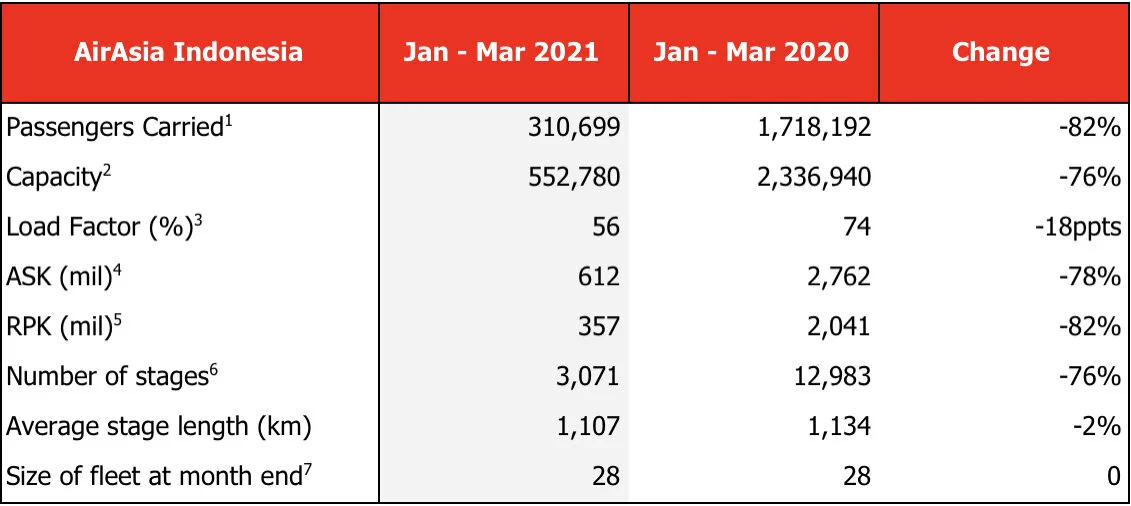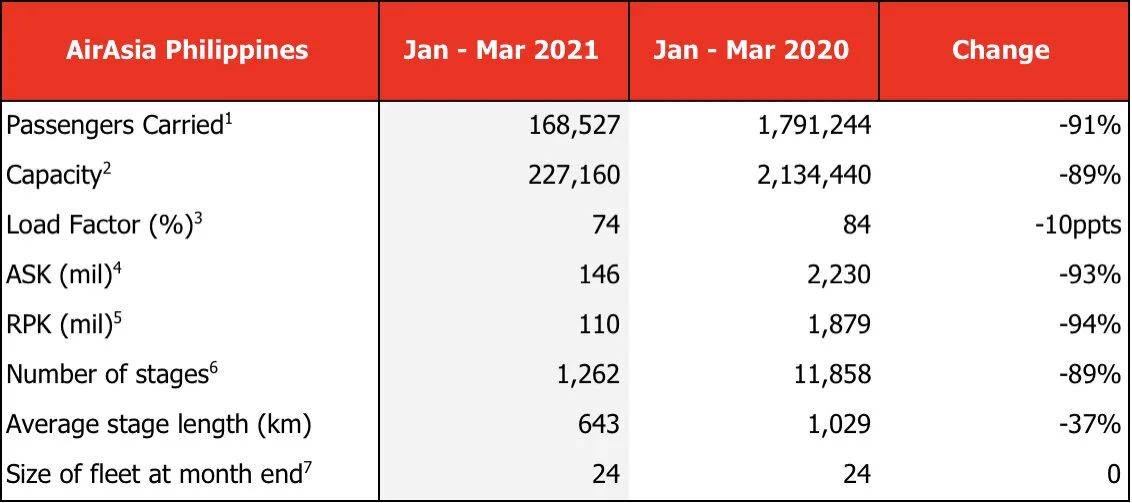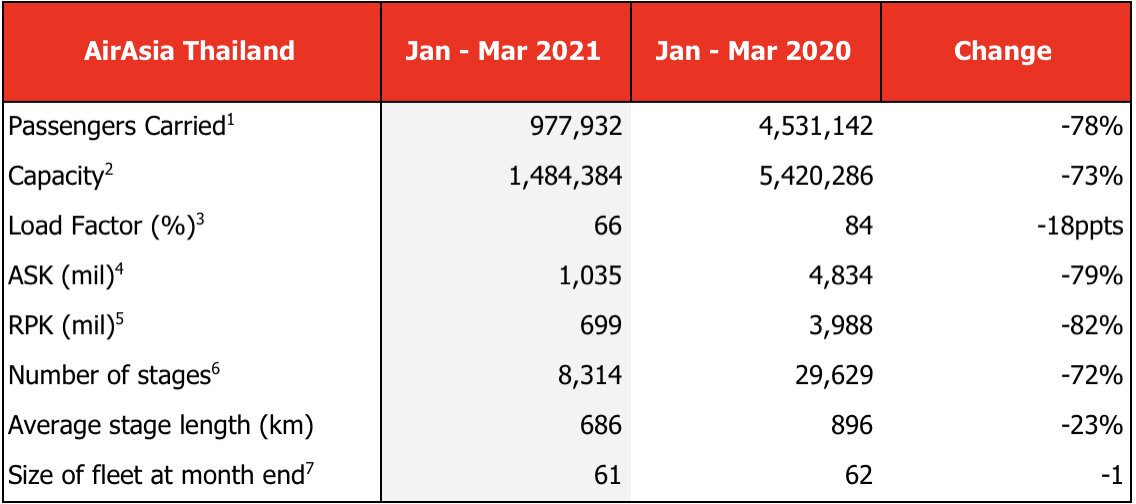AirAsia Group Berhad 1Q2021 Preliminary Operating Statistics
AirAsia Sees Improvements in March 2021 As Global Vaccine Programme Rollout Accelerates
AirAsia Group Berhad (“AirAsia” or “the Group”) presents the following operating statistics for the First Quarter of the Financial Year 2021 (“1Q2021”).
AirAsia posted operating improvements in March 2021 for all entities in comparison to February 2021, as countries worldwide focused on accelerating vaccination programmes in efforts to reach herd immunity as soon as possible. On a month-to-month basis, key operational metrics progressed positively in March 2021 as compared to February 2021, with an 84% increase in passengers carried by AirAsia Malaysia, 57% increase in passengers carried for AirAsia Philippines, 29% increase in passengers carried by AirAsia Indonesia, while AirAsia Thailand more than doubled its number of passengers carried. AirAsia expects to see solid domestic demand in its key Asean markets in the next few quarters as the majority of the population receives their vaccinations and due to strong pent up demand.
Aided by stringent capacity management, AirAsia Malaysia posted a healthy load factor of 73% in 1Q2021, 1 percentage point (“ppt”) higher QoQ, despite a lower number of passengers carried. Though travel demand during the quarter was softened by the lockdown and interstate travel restrictions imposed since January 2021, AirAsia Malaysia is encouraged by the statistics seen in March 2021 with load factor improving by 9 ppts to 76% as a result of a higher number of passengers carried. AirAsia Malaysia is optimistic that the ongoing inoculation drive in Malaysia will lead to a stronger and sustainable recovery this year.
AirAsia Indonesia gained a 29% increase in passengers carried and achieved an improvement of 2 percentage points (“ppts”) in load factor for March 2021 compared to February 2021, amidst the ramping up of public and private inoculations and further easing of restrictions. Operations remained primarily domestic.
AirAsia Philippines leveraged a strong rebound in travel demand during the quarter, carrying 168,527 passengers and a 43% increase compared to 4Q2020. The higher number of passengers carried positively resulted in an increase in load factor of 10 ppts QoQ to 74%. A month-on-month breakdown showed that AirAsia Philippines grew its number of passengers by 57% despite only increasing 30% in operating capacity in March 2021 as compared to February 2021. This resulted in a commendable 81% load factor in March 2021.
AirAsia Thailand posted a 65% QoQ decline in passengers carried due to lower travel demand caused by the new wave of the Covid-19 pandemic in Thailand which began in the middle of December 2020. Nonetheless, domestic travel demand rebounded in March 2021 due to the roll out of vaccines, the extension of domestic tourism stimulus schemes and lower new infections in the latter part of the quarter. Active capacity management helped achieve a healthy 70% load factor in March 2021.
AirAsia Group Berhad Consolidated AOCs - Malaysia, Indonesia & Philippines
1st Quarter 2021 Operating Statistics
Note: (i) The fleet count excludes:
- Two (2) A320 aircraft leased to a third party airline
Malaysia
1st Quarter 2021 Operating Statistics
Note: (ii) The fleet count excludes:
- Two (2) A320 aircraft leased to a third party airline
Indonesia
1st Quarter 2021 Operating Statistics
Philippines
1st Quarter 2021 Operating Statistics
Thailand
1st Quarter 2021 Operating Statistics
1) Number of earned seats flown. Earned seats comprise seats sold to passengers (including no-shows)
2) Number of seats flown
3) Number of Passengers Carried as a percentage of Capacity
4) Available Seat Kilometres (ASK) measures an airline’s passenger capacity. Total seats flown multiplied by the number of kilometres flown
5) Revenue Passenger Kilometres (RPK) is a measure of the volume of passengers carried by the airline. Number of passengers multiplied by the number of kilometres these passengers have flown
6) Number of flights flown
7) Number of aircraft including spares





